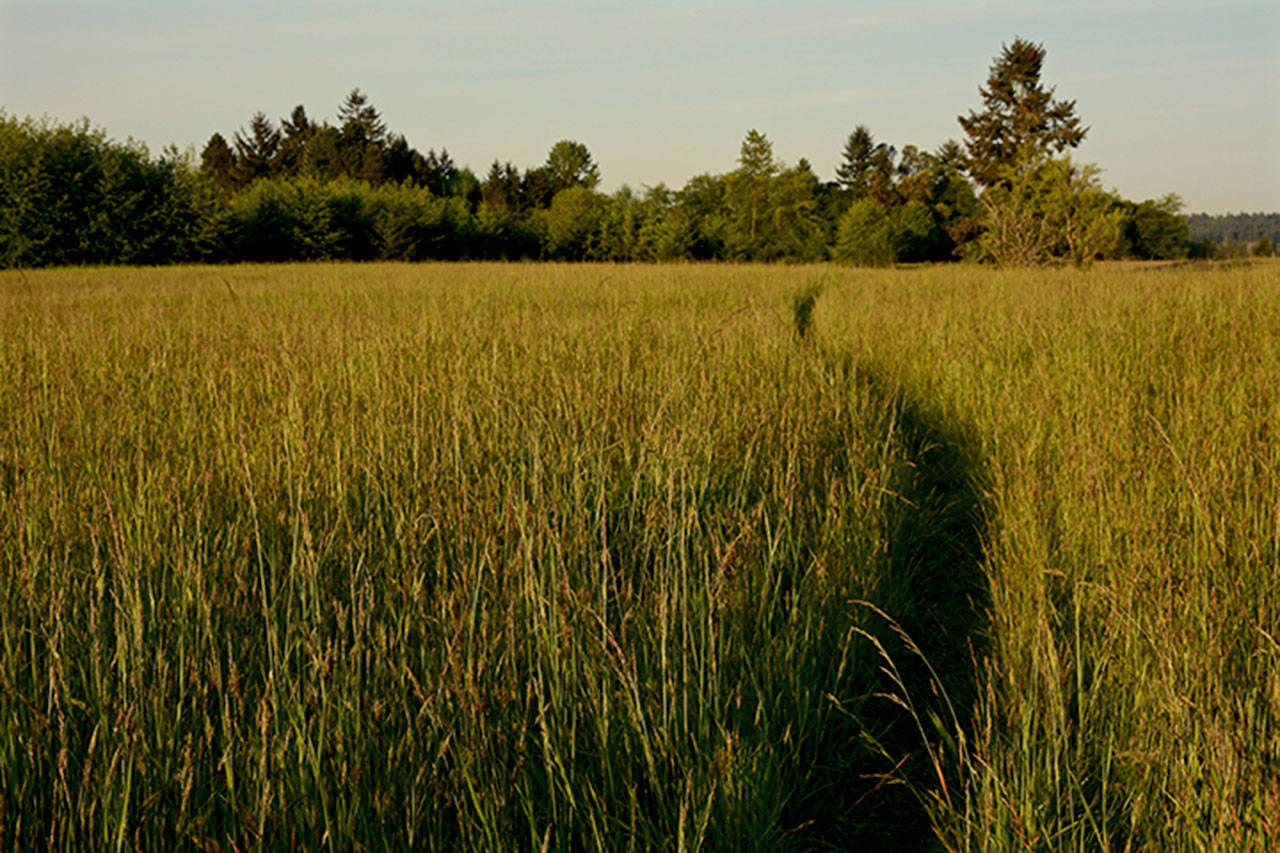I was distracted from the action at this year’s Sheepdog trials by a small flock of swallows following the herd, swooping low to the ground and scooping up insects kicked up in the dust. Later, a red-tailed hawk dove onto the field, snagged an unidentified rodent, ascended to a tall tree behind the beer garden and devoured it. These were reminders that it’s possible for nature and farms to thrive together, at least it is on Vashon, but we’re a special case.
In most places, farmers and environmentalists engage in a zero sum political battle. However, according to Vashon resident Don Stuart, “When they fight, they both lose, and so do the rest of us.” That’s what led him to write “Barnyards and Birkenstocks: Why Farmers and Environmentalists Need Each Other,” the topic of the Land Trust Book Club’s discussion Thursday evening, (please see calendar for details).
Stuart, who has worked with farmers, fishermen and environmentalists throughout the Pacific Northwest, makes a brilliant and convincing argument for a collaboration between the men and women who work the land and those who wish to protect it. He points out that a farmer/environmentalist coalition would have immense political clout.
During his career, Stuart developed a detailed understanding of the political issues that cause conflict between farmers and environmentalists and was able to craft solutions that both groups could endorse. He created a program to restore salmon habitat on working farms that also benefited the farmers’ bottom line, convinced skeptical farmers that selling their development rights would benefit business as well as the future of farming, and helped run a grant program to reduce pesticide use.
Fundamental to Stuart’s success is empathy for another’s point of view and the ability to intuit potential areas of agreement. Stuart writes with such deep respect and compassion for all the parties involved that this very specific policy book becomes a great general strategy for dealing with anyone who may not share your point of view. He believes changing someone else’s mind begins with changing your own. This kind of thinking can overcome the polarization that escalates conflict between opposing groups and instead helps them forge a connection on mutually important issues.
For example, Stuart suggests environmentalists need to realize that if a farm fails, the land does not magically revert to pristine nature. They should understand that in most cases the environmental services of farmland far surpass the standard, default alternative of fragmented development. And they can support incentives rather than regulations to help farmers meet environmental goals. Farmers, in turn, can realize that many environmental solutions will also benefit their bottom line, enable their products to command a premium in the marketplace and ensure that their farms can remain intact into the future. Both groups need to work on their trust issues.
On Vashon and Maury, we get to see our farmers face-to-face and often know their names. They’re not some anonymous, demonic corporation — they’re our neighbors. They love this island, and we love their food. However, even though we may have a head start on a farmer/environmentalist collaboration here, we face the same complicated issues as other places: water quality and conservation, wetland preservation, wildlife habitat, predators and development. Therefore, it’s critical that any dialogue about nature and the environment on Vashon includes acknowledging the rich history of our farming past, as on the Mukai and Matsuda properties, supporting the vivid presence of our many independent farms and envisioning a sustainable future in which farmers and environmentalists share stewardship of our island.
That dialogue could begin Thursday night at Matsuda with an expert to guide us. If these issues interest you, I urge you to come, even if you haven’t read the book.


